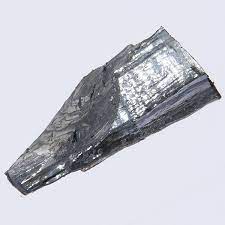Ethylene
Ethylene or ethene is the world’s most important petrochemical. It is primarily used to make polyethylene and ethylene glycol. Polyethylene is used to make plastic packaging film, plastic bags and bottles. Ethylene glycol is used to make polyester fibers and resin, and antifreeze. In 2020, ethylene had a global production volume of over 165 million tons.
Propylene
Propylene is the second most widely produced Top 15 Petrochemicals. Its main derivatives are polypropylene, propylene oxide, and acrylonitrile. Polypropylene is used to make various plastic consumer products including automotive components, textiles and packaging. Propylene oxide serves as intermediates for polyols for polyurethanes and for propylene glycol. Acrylonitrile is used for acrylic fibers, plastics and synthetic rubbers. Global propylene production in 2020 exceeded 95 million tons.
Benzene
Benzene is a key Top 15 Petrochemicals used primarily for producing cumene and cyclohexane. Cumene is oxidized to produce phenol and acetone. Phenol is used to manufacture bisphenol A and other phenolic resins. Acetone is used as a solvent in paints, coatings, and cosmetics. Cyclohexane is oxidized to produce adipic acid and caprolactam, intermediates for nylon. Benzene is also blended into gasoline to raise the octane number. Global benzene production is over 45 million tons annually.
Xylenes
Xylenes or dimethylbenzenes have three isomer forms – ortho-xylene, meta-xylene, and para-xylene. They are produced from catalytic reforming of petroleum naphtha or crude oil. Para-xylene is the most important xylene isomer and serves mainly as a feedstock for terephthalic acid, which is further processed to polyethylene terephthalate (PET). PET is used to make plastic bottles, films and polyester fibers. Global annual production of xylenes exceeds 35 million tons.
Toluene
Toluene is another important aromatic hydrocarbon obtained from catalytic reforming of naphtha. Its major use is to produce benzene via catalytic reforming. Toluene is also used to produce toluene diisocyanate (TDI) and other products like benzaldehyde and α-methylstyrene. TDI is employed to manufacture flexible polyurethane foams. Toluene saw a global production volume of over 45 million tons in 2020.
Styrene
Styrene or ethenylbenzene is extensively used for producing polystyrene and several copolymers like acrylonitrile-butadiene-styrene (ABS) resins. Polystyrene finds widespread application as protective packaging material, thermal insulation material, and buiding panels. ABS resins are used to make products ranging from electrical equipment to cars. Annual global output of styrene reaches 25 million tons.
Linear alpha olefins (LAO)
LAOs refer to alkenes with the double bond located at the primary or alpha position. They are mostly produced by oligomerization of ethylene. Popular LAOs include 1-hexene and 1-octene which are important comonomers for making polyethylene plastic films and sheets. 1-dodecence finds application as synthetic lubricants and detergent feedstocks. Global LAO capacity stands at over 11 million tons.
Butadiene
Butadiene is critical for manufacturing synthetic rubbers. About 90% of butadiene produced globally is polymerized to make polybutadiene rubber or as a comonomer for styrene-butadiene rubber and acrylonitrile-butadiene rubber. These elastomers find extensive usage in tires, footwear, adhesives and sealants. Smaller volumes of butadiene are used to produce n-butyl rubber and other specialty chemicals like butanediol and polybutadienes. Worldwide butadiene output exceeds 13 million tons annually.
Methanol
Methanol or wood alcohol is a commodity chemical manufactured by catalytic reaction of carbon monoxide and hydrogen. It is used as an intermediate to produce formaldehyde, acetic acid, methyl tert-butyl ether (MTBE) and countless other chemicals. Formaldehyde goes into manufacturing building materials like particle boards and insulation fiberboards. MTBE is added to gasoline to increase octane rating. Other minor applications of methanol include solvents and antifreeze. Global annual output stands at over 100 million tons.
Ethylene oxide
Ethylene oxide is epoxyethane, obtained commercially from ethylene. Its major use is in production of ethylene glycol by hydration and monoethylene glycol by condensation. Ethylene glycol is employed directly in making polyester fibers and resins. Monoethylene glycol finds application as an antifreeze and hydraulic brake fluid ingredient. Ethylene oxide also reacts with amines to make surfactants and with propylene oxide to create polyether polyols used in polyurethane production.
Polyethylene
Polyethylene is one of the most widely manufactured synthetic polymers globally. Low-density and linear low-density polyethylene are predominantly used for plastic bags and films in packaging industry. High-density polyethylene is employed in making rigid containers and bottles. Global annual production of polyethylene exceeds 100 million tons. Its major applications include packaging films, bags, bottles, household goods, automotive components and pipe fittings.
Para-xylene
As discussed earlier, para-xylene or PX serves as feedstock for terephthalic acid which is further processed to polyethylene terephthalate (PET). PET resins are molded into bottles for packaging beverages and several other liquids. Polyester fibers made partially or wholly from PET are utilized in textiles, carpets and apparels. PX capacity worldwide exceeds 50 million tons annually.
Ethylene dichloride
Ethylene dichloride also known as 1,2-dichlorethane is chiefly used for manufacturing vinyl chloride monomer (VCM). VCM polymerizes to form polyvinyl chloride (PVC) resin which finds diverse applications ranging from pipes, siding and window frames to credit cards, flooring and wall coverings. Annual global ethylene dichloride output is over 15 million tons.
Phenol
Phenol or carbolic acid is an indispensable Top 15 Petrochemicals derived from cumene. Its applications include production of bisphenol A, polycarbonate resins, nylon, PAH, PEP and bakelite. bisphenol A is employed to make epoxy and polycarbonate resins. Global phenol manufacture exceeds 9 million tons per year.
Cumene
Cumene or isopropylbenzene is obtained by catalytic alkylation of benzene with propylene. The largest volume use of cumene is oxidation to produce phenol and acetone as mentioned earlier. Cumene production worldwide amounts to more than 10 million tons annually.
*Note:
1. Source: Coherent Market Insights, Public Source, Desk Research
2. We have leveraged AI tools to mine information and compile it.



